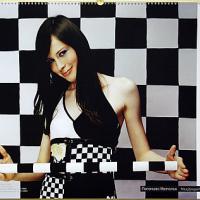
Being a Good Chess Trader
Trading pieces is a typical technique in chess. While at the start of the game both you and your opponent have an equal chess army, later in the game your forces are starting to perish. Naturally, like Saviely Tartakover used to say, “It’s better to sacrifice your opponent’s pieces.” However, the guys sitting across the board from you are usually selfish and greedy, so they don’t want to give anything away for free. Hence, you have to trick them into believing your less-efficient pieces are at least as good as their more active counter-parts in the opponents’ armies. You can use this technique both when attacking and when defending.
What is stronger in each particular position: a bishop or a knight?
In Russian bishops are called “elephants” and knights – “horses”. This made GM Eduard Gufeld, an avid bishop fan, say: “If you don’t know what is stronger – a horse or an elephant – then go to the zoo!”
Should you trade into an endgame?
These and other questions often come to a chess player’s mind during the game. To make a decision, you need to correctly evaluate the relative strengths of the pieces and foresee how the trade will affect your position in general. Is that bishop critical for defending the opponent’s light-squared pawns in the endgame? Is your seemingly passive knight crucial for capturing an outpost in the middle of the board or protecting a vital pawn on h2? Do you need one or two rooks to dominate the open file? In each particular case you need to carefully weigh all the factors. Relying on stereotypes (e.g., being certain that bishops are always better than knights in open positions) can be quite harmful. Sometimes your most active and shining piece gets exchanged for a relatively dull and neglected opponent’s piece, but the effect is still positive.
Now let me give you some tips on trading pieces while attacking:
- When you have a material advantage, trading pieces often favors the stronger side. For example, having an extra pawn in an endgame is usually better than in the middlegame, when there are lots of pieces left, and anything can happen. Note: this rule is not universal, and mainly applies to pieces, not pawns. Of course, if you exchange too many pieces and pawns, it can sometimes allow the weaker side to save the game. For instance, if you have an extra exchange, you don’t want to take it to a rook vs knight or rook vs bishop ending (both are usually drawn). Also, don’t get too carried away by a checkers approach to chess. The latter game is special in the sense that checkmating the opponent’s king is more important than capturing many pieces.
- Eliminating a critical defender. For example, a piece that is protecting the king or weak or key squares. Disposing of such a piece is like killing a king’s personal bodyguard, or breaking down the massive iron gates of a fortress.
Trading pieces when defending:
- Get some breathing space for your pieces. When you don’t have many opportunities for maneuvering, you might want to trade off some of your pieces. For instance, if you have one knight on f6 and the other on d7, and you want to see both of them on d5 instead, you might consider exchanging one of them. This is a typical example of the concept of an “extra piece” introduced by Mark Dvoretzky.
- Eliminate the key attackers of your opponent and thus ruin his plans.
- If you have more material, it often makes sense to trade as much as possible. Initiative tends to extinguish when few pieces are left on the board.
- If your king is at risk, one of the defensive techniques is simplifying the position as much as possible and heading for the endgame. This is especially true for positions when your king is exposed and/or can’t castle.
A few general pieces of advice:
- Trade passive and unpromising pieces for active ones and those with a potentially bright future. If your piece is lazy and not doing anything at all, why not get rid of it?
- Always evaluate the consequences of trading into an endgame. Who is winning then – you or your opponent?
- Playing against an isolated pawn, you usually want to trade as many pieces as possible to weaken the pawn’s defense, and then try to capture it. However, you should be careful: for example, if it’s a dangerous passed pawn which you can’t stop, trading all your pieces will be suicidal!
- A Russian chess quip that originates from blitz: “The more you trade, the less you will blunder!” Indeed, strong players often try to simplify the position into a well-known structure if they are short on time. For example, if you have three extra pawns, you will be much more comfortable playing a rook+5 pawns vs rook +2 pawns endgame than if you have queens, bishops and knights on the board. Decent technique will allow you to win this position basically without thinking much. The less calculations and unforeseen moves, the better.
Unequal trades (for example, a bishop and a knight for a rook and a pawn) belong to the field of imbalances and deserve a special article. The same can be said about sacrifices.

I couldn't find a pic from the round itself, so here's me and Olga Girya at the Russian Superfinal'07
At the recent European Women’s Chess Championship I had to face WGM Olga Girya on my birthday, March 9th:
I made a mistake in the opening and got a passive position. To make the defense easier, I decided to trade dark-squared bishops. While I lost a pawn in this operation, the sacrifice was well worth it since White’s initiative was decreased significantly.






